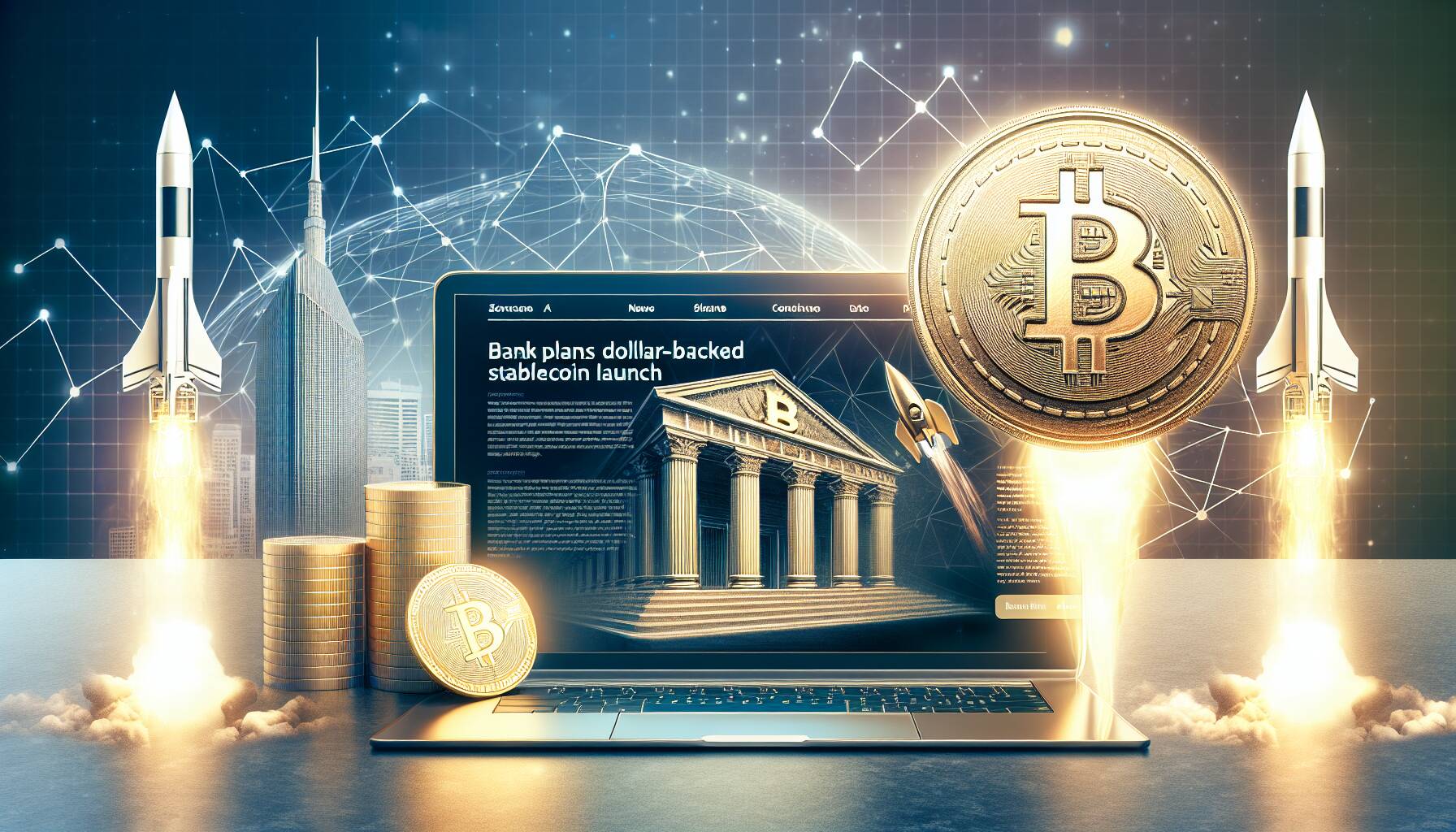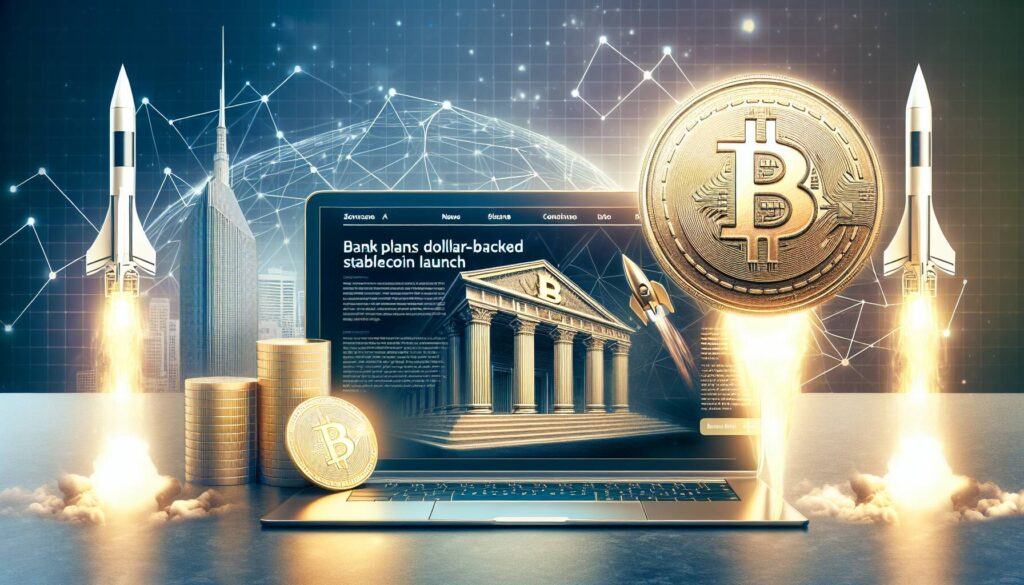In a notable shift within the financial sector, Bank of America is preparing to launch its own dollar-backed stablecoin, pending regulatory approval from U.S. lawmakers. This revelation came directly from the bank’s CEO, Brian Moynihan, during an interview at the Economic Club of Washington, D.C. on Tuesday. Moynihan indicated that the introduction of a Bank of America stablecoin hinges on the legislation favorable to digital assets, suggesting that the time for such innovation may be at hand.
Moynihan emphasized the potential of stablecoins, stating, “It’s pretty clear there’s going to be a stablecoin, which is going to be fully dollar-backed.” He likened the operations of these digital currencies to that of traditional monetary instruments like money market funds or bank deposits, which further underscores their growing significance in modern finance. The anticipation around this stablecoin is intensifying, particularly with the possibility of significant policy changes under the Trump administration, which has promised clearer regulatory guidelines aimed at encouraging innovation within the cryptocurrency space.
“If they make that legal, we will go into that business,”
Notably, Bank of America has historically taken a more wait-and-see approach compared to its competitors like J.P. Morgan and Citigroup, which have actively engaged in the crypto market. However, with shifting regulations on the horizon, the bank may find itself compelled to pursue opportunities in the burgeoning sector. Other financial institutions like Charles Schwab are also adapting by increasing their focus on digital assets, indicating a broader trend among traditional banks.
The stablecoin sector is gaining traction across political lines, receiving support from both Democrats and Republicans. This bipartisan interest may streamline the legislative process, with lawmakers aiming to deliver a stablecoin framework within the first 100 days of a Trump presidency. With stablecoins already accounting for over trillion in transaction volume last year—surpassing the combined figures of Visa and Mastercard—the infrastructure for digital currencies is becoming an undeniable force in the payments ecosystem.

Bank of America Preparing for a Dollar-Backed Stablecoin
The potential launch of a dollar-backed stablecoin by Bank of America could significantly impact the financial landscape. Here are the key points to consider:
- Legislation Dependency:
- The launch hinges on U.S. Congress passing legislation to permit the issuance of stablecoins.
- The Trump Administration’s focus on a supportive regulatory environment may expedite this process.
- Bank of America’s Strategy:
- Bank of America CEO Brian Moynihan indicates readiness to enter the stablecoin market, acknowledging its resemblance to money market funds.
- Shifting regulations may force the bank to adapt its crypto strategy to remain competitive.
- Rising Competition:
- Increased regulatory clarity could spark greater competition among major banks, including Bank of America, J.P. Morgan, and Citigroup.
- Charles Schwab has already begun exploring digital assets, highlighting the competitive landscape evolution.
- Stablecoin Market Dynamics:
- Stablecoins have recently shown significant growth, with over trillion in transaction volume in the past year.
- This volume has surpassed traditional payment giants like Visa and Mastercard.
- Bipartisan Support:
- Both Democrats and Republicans support stablecoin legislation, making it easier to establish regulations compared to other crypto assets.
- However, concerns about potential illicit activities remain a point of contention, mainly voiced by Democrats.
The emergence of a Bank of America stablecoin could change how consumers and businesses transact, offering a trusted digital currency alternative tied directly to the U.S. dollar.
Bank of America’s Bold Move into the Stablecoin Market
Bank of America’s potential entry into the dollar-backed stablecoin space marks a significant shift in its traditionally cautious stance regarding cryptocurrencies. As the CEO, Brian Moynihan, hinted at the company’s readiness to launch a stablecoin contingent on favorable legislation, this move positions them uniquely against competitors like J.P. Morgan and Citigroup, who have already ventured into the crypto realm more aggressively. The primary advantage for Bank of America lies in its immense existing infrastructure and customer base, enabling a smooth transition and integration of digital assets into its service offerings.
However, this cautious approach could also be a double-edged sword. By delaying its entry into the crypto market, Bank of America has potentially missed early-mover advantages that J.P. Morgan and others have capitalized on, giving them established reputations in crypto offerings. Moreover, the anticipated regulatory framework from the Trump administration could create a fast-evolving landscape that may overwhelm a late-comer like Bank of America, forcing them to scramble for market share in an increasingly competitive environment.
For consumers, particularly crypto enthusiasts and investors, the implications are significant. Bank of America’s entry could enhance consumer confidence in stablecoins while providing a more reliable option from a well-known institution. This could lead to broader adoption of cryptocurrencies, especially among those hesitant to engage with newer, less-established platforms. On the flip side, if Bank of America’s stablecoin does not meet expectations in terms of efficiency or security, it could harm public perception of digital assets as a whole, potentially driving cautious users away.
The evolving regulatory landscape is also a crucial factor. With bipartisan support for stablecoin legislation, the environment is ripe for development. However, as Bank of America repositions itself to seize these new opportunities, it must tread carefully to avoid regulatory pitfalls that could hinder its advances. The dynamic interplay between legislative developments and the competition from nimble fintech companies could present challenges that the bank needs to navigate judiciously.
In essence, while Bank of America stands to gain significantly from entering the stablecoin market, it must also be prepared for the myriad of challenges that come with such a leap. The incoming competition and evolving regulations require a strategic approach to ensure it not only captures market share but also secures consumer trust in the burgeoning world of digital assets.

















